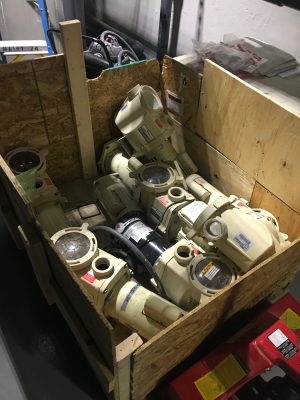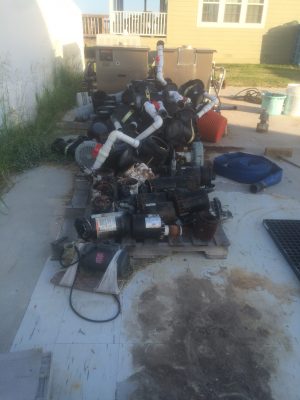With most electro-mechanical equipment, heat is a major enemy to service life. A standard industry reference of pump motor service life and rated operating temperatures is 10 degrees C above rated nameplate. Shell temp will decrease service life by half, and 10 degrees C below nameplate will have a similar scalar effect that extends service life. It’s very common in most all municipal power systems to have inconsistent or spikes in supply voltage. It’s also in pump systems to have intermittent changes to a system that increase load (opening or closing a valve, backwashing a filter). It’s for these reasons NEMA provides standards for motor manufactures to accommodate the dynamic and intermittent nature of such systems – resulting in features like motor Service Factor.
 Some manufactures use motor service factor to make their nameplate Horse Power look advantageous over the next manufacturer; instead of utilizing the feature for its intention of preserving service life. This marketing scheme is mostly used to drive down cost, providing an inferior product with low service life that ends up costing the end user more time and money.
Some manufactures use motor service factor to make their nameplate Horse Power look advantageous over the next manufacturer; instead of utilizing the feature for its intention of preserving service life. This marketing scheme is mostly used to drive down cost, providing an inferior product with low service life that ends up costing the end user more time and money.
 Utilizing service factor amps in continuous duty adds heat to the motor winding and shell. When specifying a pump for service, one should scrutinize pump performance data (namely efficiency and Brake Horse Power) of any motor with a service factor more than 1.15.
Utilizing service factor amps in continuous duty adds heat to the motor winding and shell. When specifying a pump for service, one should scrutinize pump performance data (namely efficiency and Brake Horse Power) of any motor with a service factor more than 1.15.
 The responsible and lasting practice in pump systems is to not overload a motor at any point on the performance curve. Consuming service factor amps is overloading; here is an example of a grossly overrated service factor and underrated nameplate horsepower.
The responsible and lasting practice in pump systems is to not overload a motor at any point on the performance curve. Consuming service factor amps is overloading; here is an example of a grossly overrated service factor and underrated nameplate horsepower.





Comments